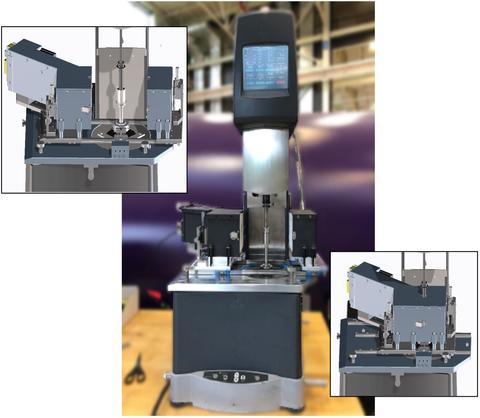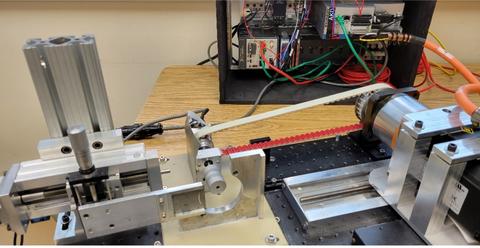CHRNS:Rheometers
Timestamp capabilities and upgrades
SECoPS-compatible Python Libraries with ADARA timestamp packet emission to be compatible with the CHRNS Initiative. Rheosansverse (SECoP/ADARA rheometer control): https://gitlab.nist.gov/gitlab/jkrzywon/rheosansverse
Rheometer ARES G2
The ARES G2 rheometer provides strain-controlled rheological measurements (meaning the strain input is decoupled from the stress output), which enables more advanced techniques such as orthogonal superposition rheometry. With the dielectric cell mounted, this rheometer can also be used to simultaneously measure the sample impedance spectroscopy, rheology, and SANS microstructure [1].
CHRNS has upgraded the forced-convection oven design to improve SANS measurements. The new oven design enables easier sample and geometry access while positioned on the neutron beamline, lowers background scattering by implementing double-paned quartz windows, and increases the maximum obtainable scattering angle. The forced-air convection design allows for fast temperature changes (approximately 1 °C/s) within the tested range from -100 °C to 200 °C.

Ongoing work aims to further broaden the accessible temperature range by improving the oven insulation and gap seals. Improvements in the NICE software integration, time-stamping, and data visualization will facilitate on-the-fly data analysis of the simultaneous impedance, rheological, and SANS measurements.
1-2 Shear Cell
The 1-2 shear cell allows users to probe the microstructure of viscoelastic materials under the shear flow in the 1-2 plane (velocity-gradient), which is the flow plane that cannot be directly measured with other Couette-type geometries and rheometers. There is a strong coupling between the bulk rheology and microstructural features in the 1-2 plane of shear. For example, flow-instabilities such as shear banding can be studied by scanning the aperture across the gap in the 1-2 plane.
CHRNS has upgraded the motor and controller to provide better control of shear modes and a better interface for users. The new motor and controller also provide better integration with the SANS instrument.

Ongoing work aims to fully integrate this unique device with the instrument control software suite. It will allow to fully control the device from the instrument software which in term give us the capability to record all the device parameters and include them in the SANS data file.
[1] “Dielectric RheoSANS — Simultaneous Interrogation of Impedance, Rheology and Small Angle Neutron Scattering of Complex Fluids”, J. Vis. Exp, 122, e55318, DOI: 10.3791/55318 (2017).
https://www.nist.gov/ncnr/sample-environment/sans-equipment/shear-and-rheology
Contacts
-
(301) 975-2020

